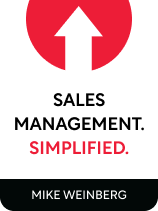

This article is an excerpt from the Shortform book guide to "Sales Management. Simplified." by Mike Weinberg. Shortform has the world's best summaries and analyses of books you should be reading.
Like this article? Sign up for a free trial here .
What makes a good sales strategy? What is the key to designing a sales strategy that drives results?
A crucial element of strategic sales management is devising and communicating a clear sales strategy for your team to follow. Your sales strategy should highlight which customers or potential customers each team member should call, how they should prioritize these customers, and which products they should prioritize selling.
In this article, we’ll take a look at what makes an effective sales strategy, according to sales expert Mike Weinberg.
How to Create an Effective Sales Strategy
An effective sales strategy focuses on the most promising customer groups—in other words, those who can generate the company the most revenue. To figure out which customer groups are the most promising, you should analyze recent sales successes: What types of customers have been buying your product or service recently? Other customers with the same demographics may be promising leads.
Alternatively (or concurrently), consider primarily targeting potential customers who already know about your company—for instance, those you or your team members have met already at conferences or networking events. Potential customers often warm up to sales efforts sooner if they feel they’re dealing with something or someone familiar.
Consistently Review Your Strategy
Once you’ve decided on and communicated your team’s strategy, you should periodically review the strategy to check it’s still generating good results. If necessary, adjust the strategy to prioritize the customers who can earn your company the greatest revenue right now—even if this means sidelining customers who’ve shown promise in the past.
How Often Should You Review Your Sales Strategy?
Research suggests that there’s no consensus answer to this question: Among one group of surveyed sales leaders, the frequency of strategy review varied from weekly, to monthly, to quarterly, to only when a major sales deal failed. Which timeframe you decide on may depend on the market your team operates in. If it’s a market with continually changing conditions (and thus changing customer demand), weekly or monthly recalibration may be necessary. If the market is static, a quarterly review may be sufficient.
Focus on Impactful Tasks, Not Non-Managerial Duties
One of the most important things a sales manager can do is use their time wisely. This means using their limited time to focus solely on impactful managerial tasks—for instance, coaching team members, tweaking your sales strategy, or holding team meetings. Your team will only succeed if you dedicate time to these crucial activities.
What if senior leaders ask you to complete a low-impact task (such as helping someone from a different department to write a report) and it’s difficult for you to say no? Weinberg argues that you can reduce the likelihood of this happening by thoroughly and publicly blocking your time. This involves splitting your time into blocks (for instance, hourly chunks) then assigning dedicated tasks to each “block.” That way, if you’re asked to complete a non-essential task, you have an excuse to decline (all of your time is already blocked out).
(Shortform note: Time-blocking—also known as “timeboxing”—has many other benefits. In Indistractable, Nir Eyal contends that creating timeboxes prevents you from focusing too much on one responsibility to the detriment of others, since you’ve already set an end time for each activity. Meanwhile, in Deep Work, Cal Newport argues that time blocking reduces your chances of becoming unfocused and switching between tasks, since you’ll have set a specific goal for each block.)
| Techniques for Focusing on High-Impact Tasks Weinberg’s view on managerial time management aligns closely with that of Peter Drucker who, in The Effective Executive, similarly recommends that managers spend the majority of their time on high-impact tasks. However, Drucker goes into much more detail than Weinberg on this topic, recommending several specific techniques for cutting non-important tasks so you can focus on what matters. These include: Delegating activities that other team members could do just as well, if not better, than you. Cutting out low-value activities that, upon reflection, you don’t really need to do—for instance, work-related social events. Cutting time-wasting activities that result from poor management; for instance, time spent frantically trying to meet an urgent deadline that you didn’t adequately plan for and thus takes up all of your time for a few days. |

———End of Preview———
Like what you just read? Read the rest of the world's best book summary and analysis of Mike Weinberg's "Sales Management. Simplified." at Shortform .
Here's what you'll find in our full Sales Management. Simplified. summary :
- Why the problem with most struggling sales teams is an ineffective sales leader
- The five techniques to successfully manage a sales team
- How to create a sales culture where your team members feel respected and happy






